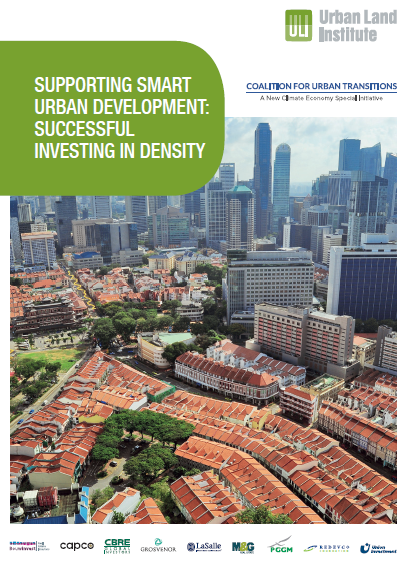Supporting Smart Urban Development: Successful Investing in Density


This paper demonstrates how investors as well as citizens benefit from compact urban forms with good public transport connections, shared green spaces, and a mix of housing, shops, services and businesses rather than urban sprawl.
Both the public and private sectors are searching for solutions to accommodate urban growth in a way that preserves both the environment and the quality of life for residents and visitors. Internationally, many dense and well-connected cities have a positive track record for offering both a high quality of life and success in reducing their carbon emissions. In addition, what this report refers to as ‘good density’ — dense, well-connected development that is thoughtfully designed to promote a high quality of life — may be more sustainable and prosperous in the long term and therefore more likely to provide more resilient risk-adjusted returns for investors. The research offers some initial insights into relationships between density, emissions and investment returns. Due to a paucity of data, the findings are high-level and indicative only.
This report is the result of collaboration between a powerful group of innovative real estate investors and developers that are actively building the cities of the future. Collectively, this group owns or manages over US$300 billion worth of real estate assets worldwide. The research underpinning the report was initiated by the Urban Land Institute (ULI) and the Coalition for Urban Transitions.
The research demonstrates for the first time how investors as well as citizens may benefit from compact urban forms with good public transport connections, shared green spaces, and a mix of housing, shops, services, and businesses rather than urban sprawl. The research findings support the understanding and practices of leading investors in this field.